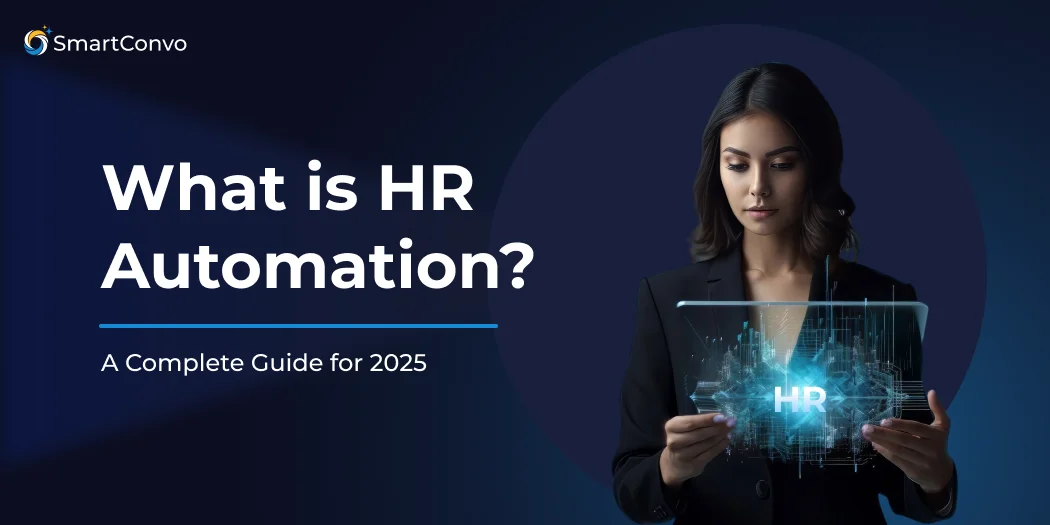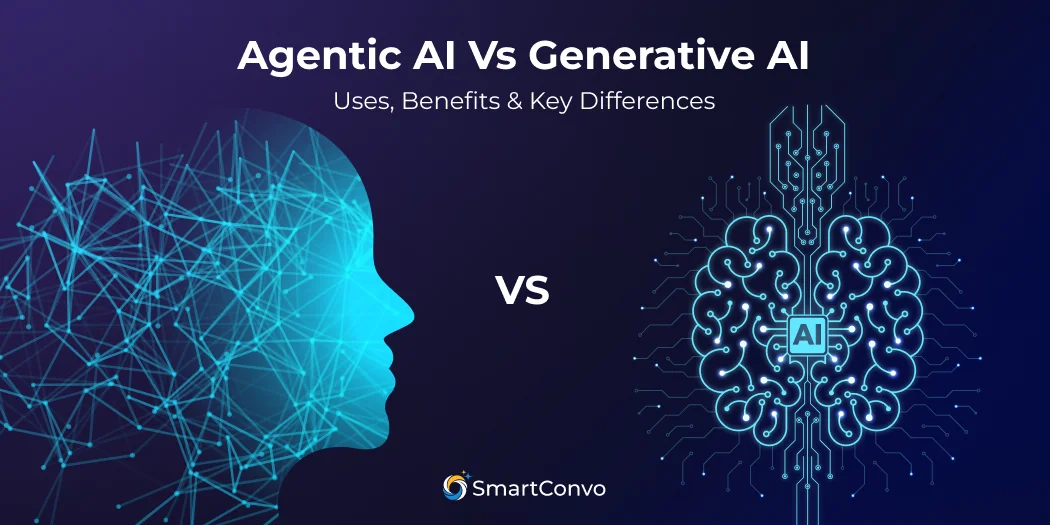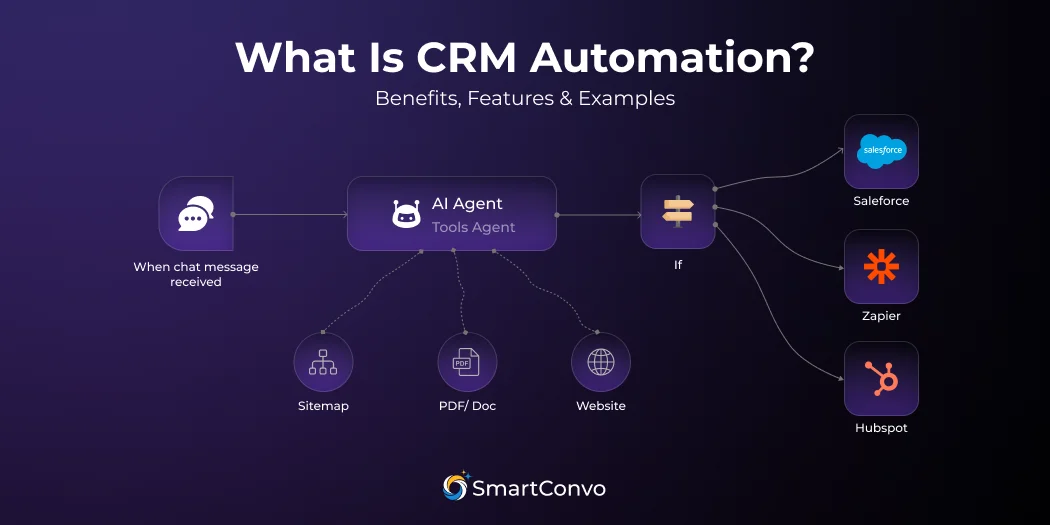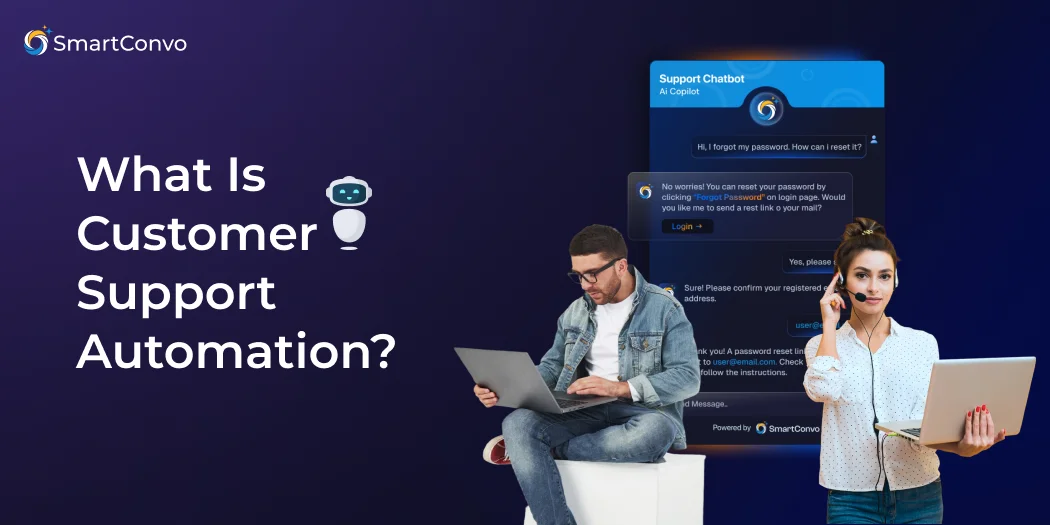Streamlining processes, boosting efficiency, and empowering teams—this is the promise of HR automation in 2025. As businesses continue to evolve, HR automation is transforming the way organizations manage their people and processes.
Automated systems can handle repetitive tasks like payroll, onboarding, and performance management, freeing up valuable time for HR professionals to focus on more strategic initiatives.
For HR professionals, business owners, and recruiters, understanding and leveraging these systems can redefine the very way human resources function, leading to improved productivity, better decision-making, and a more engaged workforce.
The future of HR is here, and automation is paving the way.
This comprehensive guide unpacks everything you need to know about HR automation—what it is, how it works, why it matters, and how to make the most of it with advanced tools like Smartconvo AI.
Whether you’re new to automation for HR or looking to deepen your understanding, we’ve got you covered.
What is HR Automation?
HR automation refers to the use of technology and software to automate time-consuming and repetitive human resource tasks. Rather than manually handling processes, businesses can utilize automatic HR tools to streamline workflows, allowing HR professionals to focus on more strategic initiatives.
By automating human resources, processes like recruitment, onboarding, performance management, payroll, and compliance are carried out with minimal manual intervention. These systems often leverage AI automation and machine learning for enhanced decision-making capabilities.
How Does HR Automation Work?
HR automation relies on various technologies such as AI, machine learning, robotic process automation (RPA), and cloud software. These systems:
- Integrate with existing HR tools to manage employee data.
- Use AI to automate repetitive tasks like attendance tracking and form submissions.
- Analyze large datasets for insights, improving decision-making and strategic planning.
- Foster seamless communication via HR chatbots, enhancing employee engagement.
Streamline your HR processes for faster, more efficient operations that not only save time but also improve productivity and drive better overall outcomes for your business.
Why is HR Automation Important in 2025?
The HR landscape is evolving rapidly, and automation has become an essential tool rather than a luxury. Here’s why automation for HR is critical in 2025:
- Hybrid Work Environments: Remote and hybrid work arrangements demand tools that can seamlessly track performance, attendance, and workflows.
- Employee-Centric Culture: Automation helps create an environment where the focus is on employee growth and experience instead of managing mundane tasks.
- Data-Fueled Decisions: AI-powered HR software delivers insights that shape strategic decisions.
- Global Workforce: With companies hiring across geographies, automation ensures standardized HR processes without geographic limitations.
Benefits of HR Automation
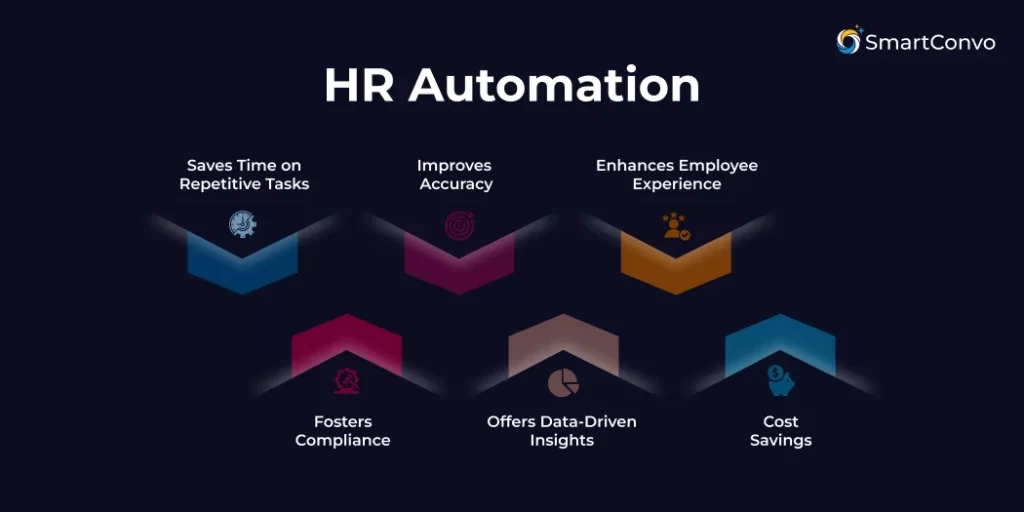
The automation of HR processes comes with a host of benefits that make implementation a must for businesses looking to scale efficiently.
1. Saves Time on Repetitive Tasks
Automating processes like payroll, leave requests, and attendance tracking helps streamline operations and frees HR staff from time-consuming administrative duties.
With these tasks handled by software, HR teams can shift their focus to higher-value activities, such as employee engagement and development.
Additionally, tools with advanced HR chatbots can efficiently manage FAQs, providing instant responses to common employee inquiries about policies, benefits, or procedures.
This not only improves response times but also reduces the workload on HR teams, giving them more time to concentrate on strategic initiatives that drive organizational growth.
2. Improves Accuracy
Human error in manual data handling can lead to costly mistakes, from incorrect employee payments to compliance violations that may result in legal penalties.
Automated HR systems help eliminate these risks by ensuring data precision and consistency, especially in critical areas like payroll processing, tax calculations, and meeting regulatory requirements.
By streamlining these processes, organizations can save time, reduce errors, and maintain trust with their workforce.
3. Enhances Employee Experience
With HR chatbots and AI-driven tools, employees can easily submit queries, schedule leaves, or track their performance metrics, all without the frustration of long wait times.
These tools provide instant responses, streamline repetitive processes, and reduce the burden on HR teams. By simplifying these interactions, organizations can boost employee satisfaction, improve overall engagement levels, and create a more efficient workplace experience.
4. Fosters Compliance
Compliance is non-negotiable in HR, as failing to meet legal requirements can lead to severe penalties, lawsuits, or reputational damage.
Automated systems play a critical role in simplifying this complex task by tracking ever-changing regulations and ensuring organizations stay up to date.
These systems help HR teams adhere to labor laws, manage employee data securely, and avoid costly legal risks, giving businesses peace of mind and allowing them to focus on their core objectives.
5. Offers Data-Driven Insights
Advanced tools generate real-time metrics and predictive analytics, providing HR teams with the ability to track performance, monitor employee engagement, and forecast future trends.
This data empowers HR professionals to anticipate challenges and make well-informed, strategic decisions.
Enterprise AI takes this a step further by ensuring these insights are not only accurate but also actionable, helping organizations implement solutions that drive meaningful results.
6. Cost Savings
While implementing HR automation comes with an upfront cost, the long-term savings in time and labor often translate to higher ROI.
By automating repetitive tasks such as payroll, scheduling, and onboarding, companies can reduce human error, streamline processes, and allow HR teams to focus on more strategic initiatives, ultimately driving greater efficiency and value for the organization over time.
Applications of HR Automation
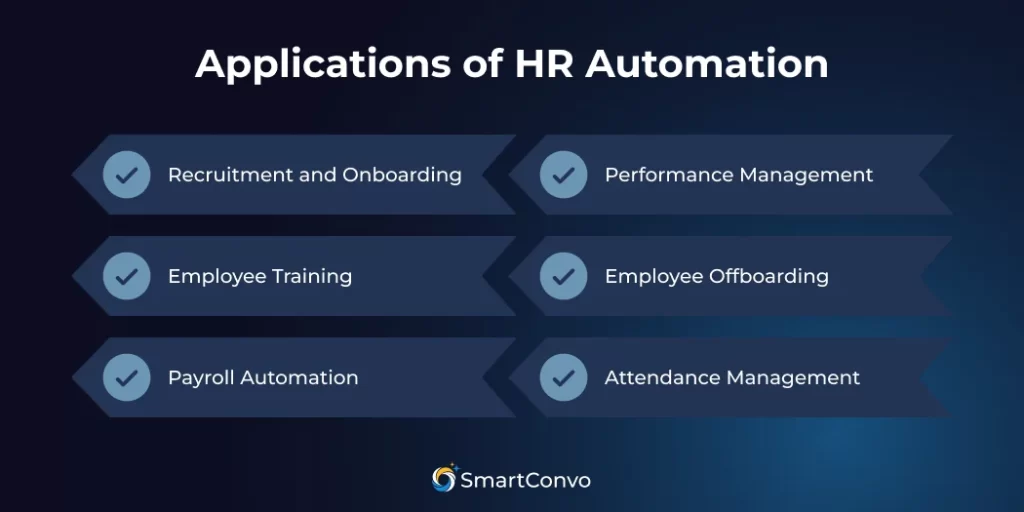
1. Recruitment and Onboarding
From posting jobs to shortlisting candidates, recruitment workflows are now seamlessly managed by AI tools, saving time and reducing human error.
These tools analyze resumes, match skills to job requirements, and even schedule interviews, streamlining the hiring process from start to finish.
For onboarding, automated systems ensure new hires are integrated into company processes with efficiency and ease, providing everything from paperwork management to training modules.
This technology not only speeds up recruitment but also enhances the employee experience right from day one.
2. Employee Training and Development
Automated training modules not only track individual progress but also provide personalized insights to help employees improve. By analyzing performance data, these tools can suggest tailored growth plans to align with both personal goals and organizational needs.
Additionally, tools like AI chatbots for HR play a key role in enhancing employee development programs by answering common questions, offering on-demand guidance, and facilitating continuous learning opportunities.
Together, these technologies create a more efficient and supportive development process.
3. Payroll Automation
By automating payroll, businesses ensure timely payments to employees, eliminating delays that can impact morale. It also guarantees error-free calculations, reducing the risk of mistakes in wages, deductions, and overtime.
Additionally, automation helps maintain compliance with tax regulations and labor laws by keeping systems updated with the latest legal requirements, saving both time and resources while avoiding costly penalties.
4. Performance Management
HR automation tools are equipped to track and measure employee performance, providing valuable insights into productivity and growth areas.
These tools enable managers to offer structured feedback, create personalized development plans, and monitor progress over time. By streamlining performance evaluations, HR automation ensures a more efficient and effective approach to fostering employee growth and achieving organizational goals.
5. Employee Offboarding
Employee exit processes, such as managing final settlements, retrieving company assets, or conducting detailed feedback surveys, are significantly streamlined with automation.
By reducing manual effort, automation ensures these tasks are handled efficiently, accurately, and with minimal disruption, providing a smoother offboarding experience for both the employee and the organization.
6. Time and Attendance Management
Automating attendance tracking not only reduces manual errors but also ensures compliance with labor regulations and provides accurate records for audits.
It improves employee transparency by offering clear and accessible attendance data, fostering trust and accountability within the workplace. Additionally, it saves time for HR teams, allowing them to focus on more strategic tasks.
Challenges of HR Automation
While the future of automation is promising, there are challenges businesses need to be aware of:
- Implementation Costs: The initial cost of deploying advanced automation tools might be steep for small businesses.
- Resistance to Change: Employees and teams may resist adopting new technologies.
- Data Security Concerns: Managing sensitive employee data in cloud-based systems requires robust cybersecurity measures.
- Customization Needs: One-size-fits-all solutions may not meet the unique needs of every organization.
The Future of HR Automation
The next decade will see HR processes evolve with cutting-edge technologies. Highlights include:
- AI Agents for deeper insights and contextual recommendations.
- Advanced HR knowledge management systems to streamline information sharing within organizations.
- Integrations with customer support bots to create HR-related service layers.
- Personalization powered by the AI Answer Generator, providing tailored HR solutions for individual employees.
Make the Most of Your HR Automation with Smartconvo AI Tool
At the forefront of innovation, Smartconvo AI Tool takes HR automation to the next level by offering cutting-edge solutions tailored to streamline recruitment, payroll processing, performance tracking, and much more.
It’s designed to save time, reduce manual effort, and improve overall efficiency in HR operations. Beyond HR, Smartconvo doubles as a versatile sales chatbot, enabling seamless collaboration across teams while enhancing customer interactions.
With its intuitive features, it also promotes elevated employee engagement in HR, fostering a happier, more connected, and productive workforce. Whether you’re managing complex HR tasks or improving cross-team workflows, Smartconvo is your all-in-one solution to simplify processes and drive success.
No Credit Card Required | 14 days Free Trial
Build Your Chatbot
Conclusion
The transformation of HR through automation is no longer the future—it’s here, and it’s changing the way businesses operate. From streamlining tedious administrative tasks to improving hiring processes, HR automation tools are revolutionizing how companies manage their workforce.
Businesses that adopt these tools today gain a competitive edge by delivering greater efficiency, enhanced accuracy, and remarkable employee experiences that foster engagement and retention.
Frequently Asked Questions (FAQ)
Yes! Automated solutions are scalable, making them ideal for businesses of all sizes. Small businesses can start with core features and scale up as they grow.
By simplifying repetitive tasks and enabling self-service options through HR chatbots, employees spend less time navigating HR processes and more time focusing on their growth.
AI-based HR platforms, chatbots, and cloud-based systems like payroll software or recruitment automation tools are common solutions.
While initial implementation costs vary, long-term benefits such as cost savings and improved efficiency make automation a worthwhile investment.
Offer training on new tools, ensure leadership buy-in, and address concerns about change management.




